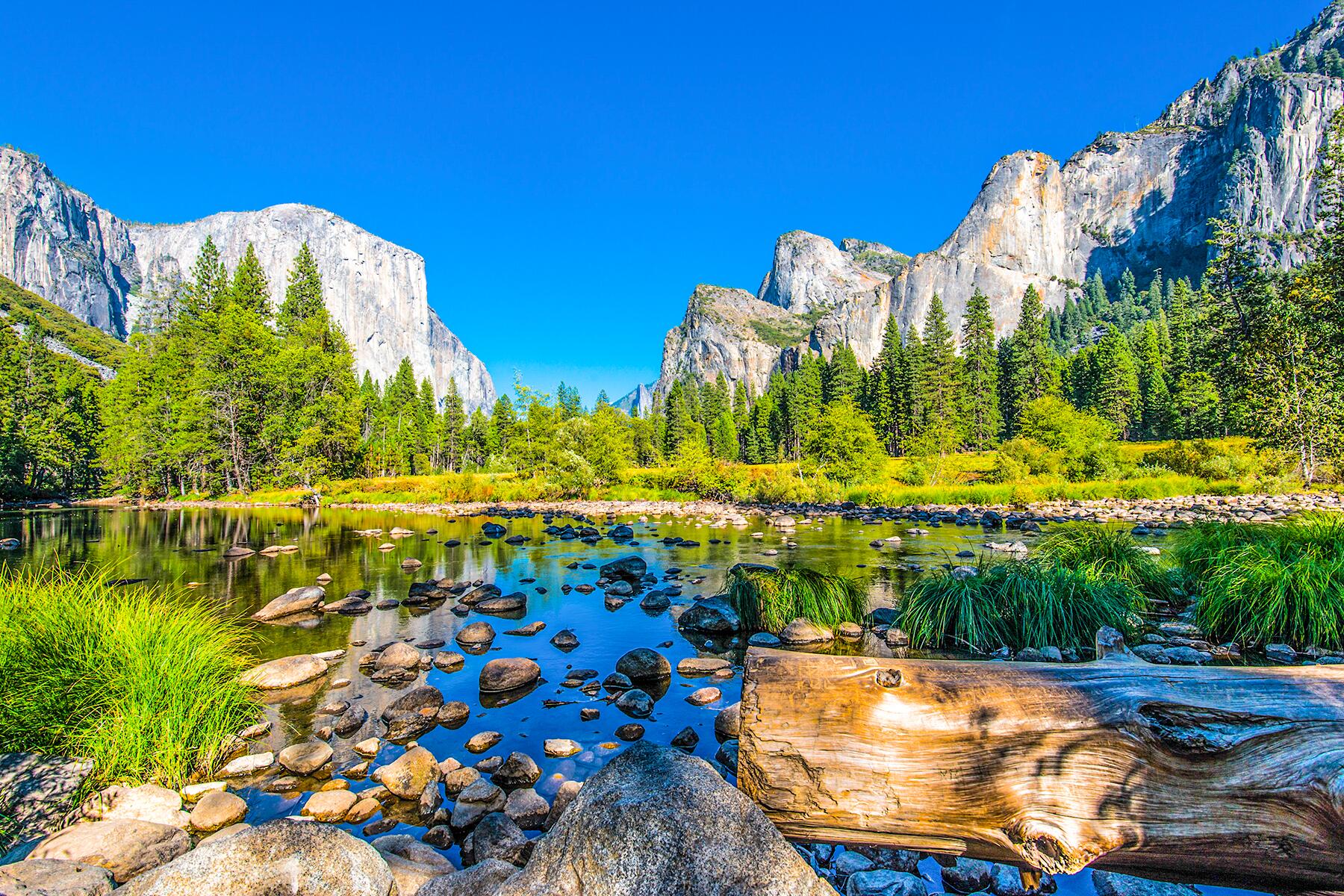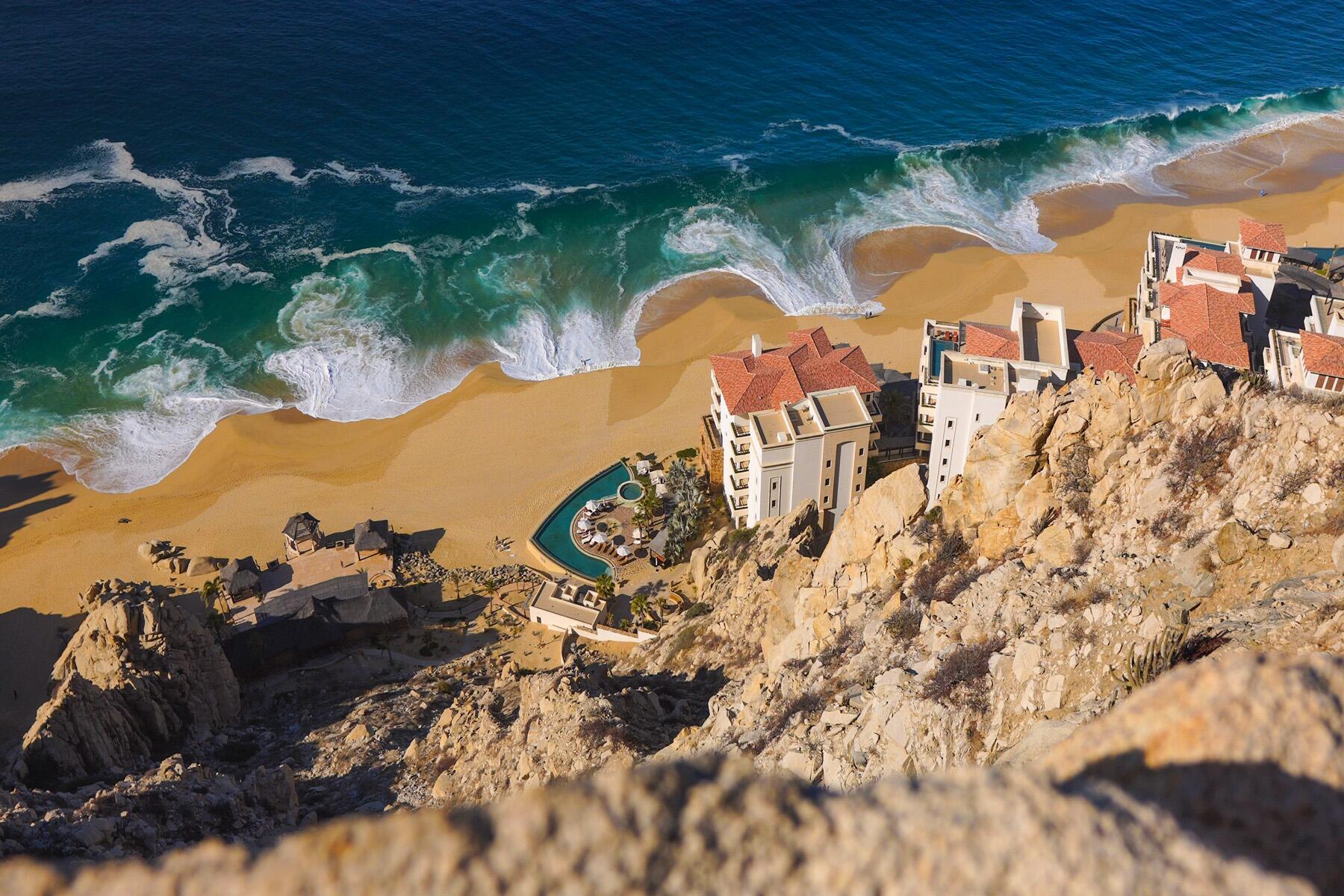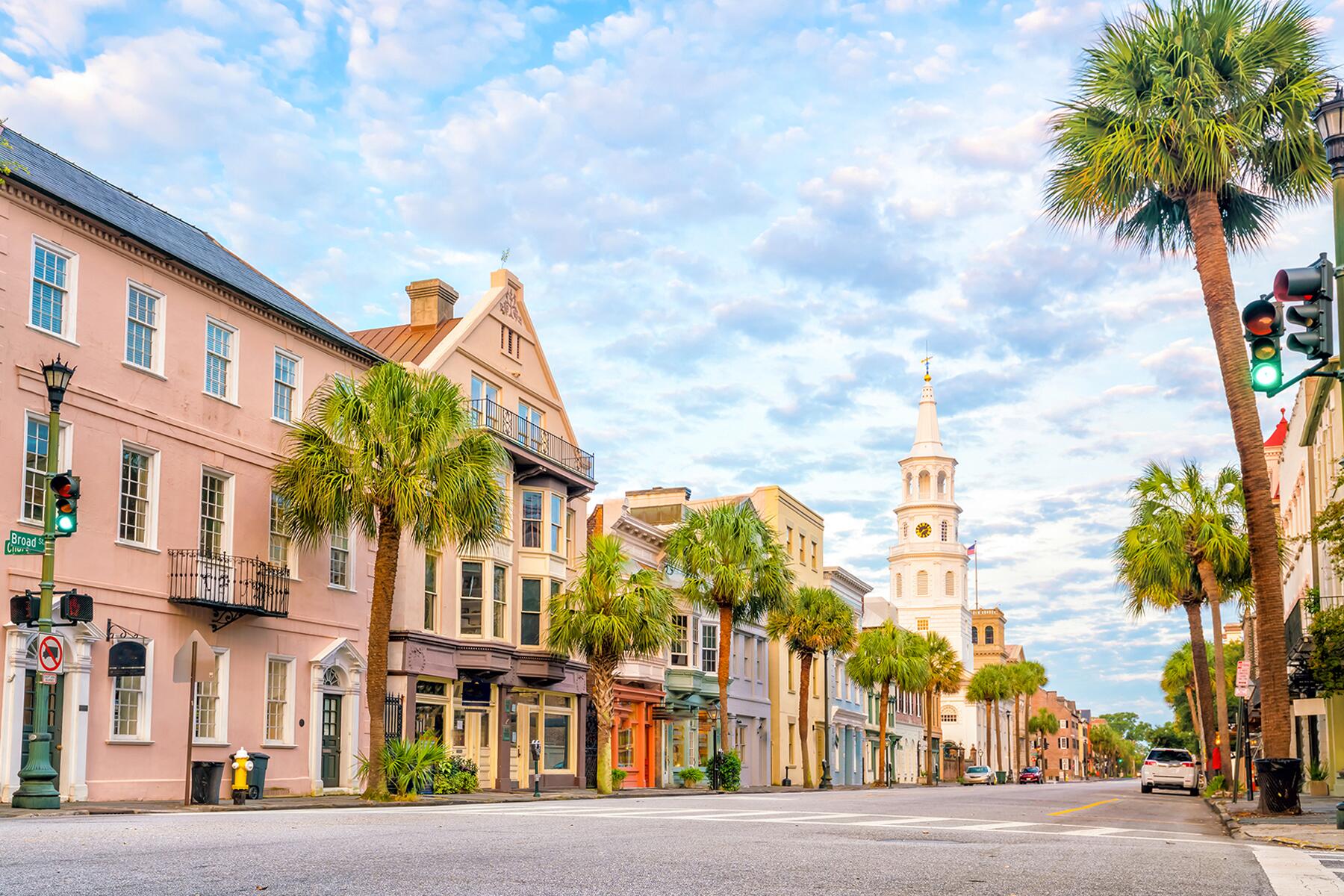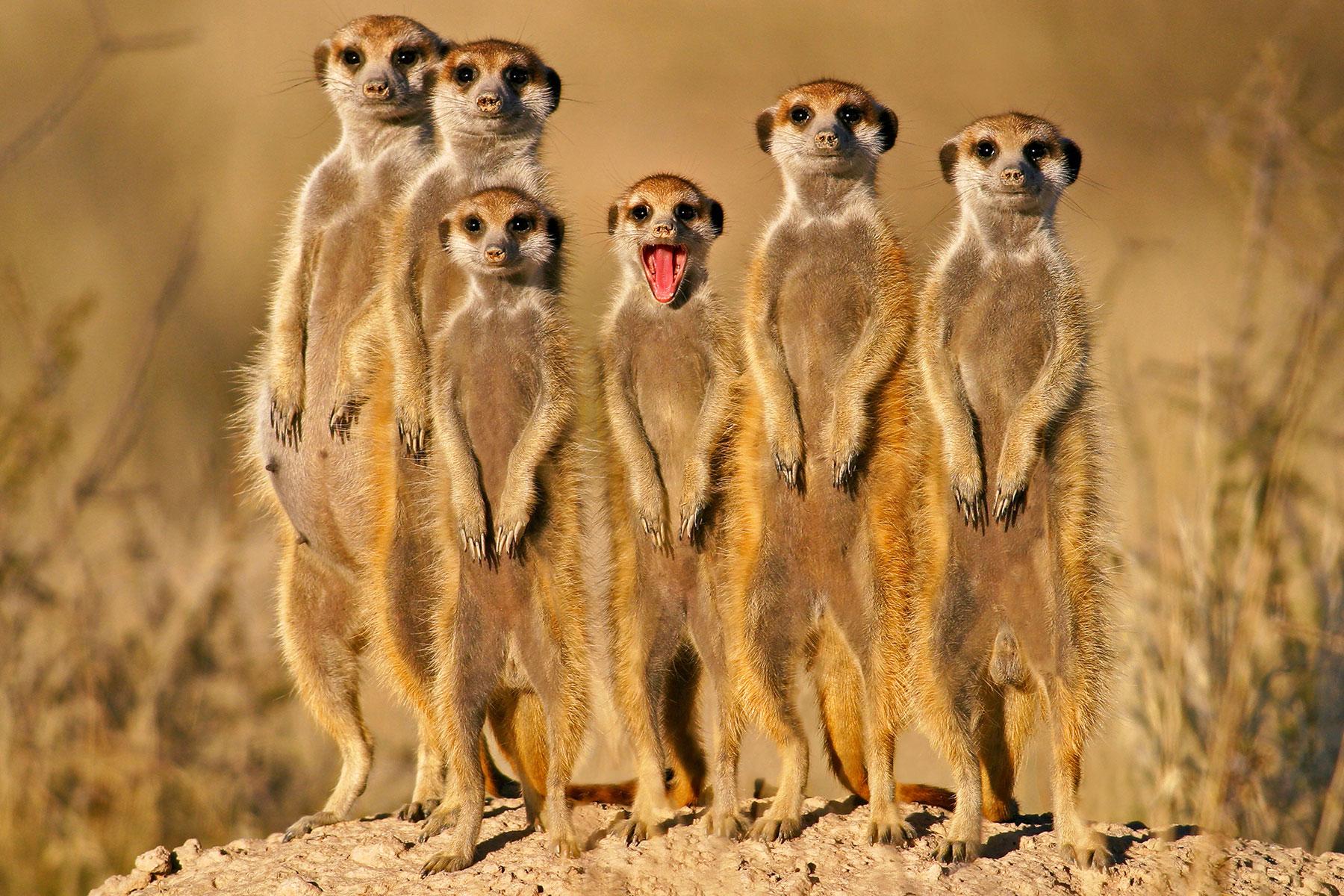Visiting South Africa is about so much more than just going on Safari.
If visiting South Africa was only about spying the Big Five, then it would be easy to plan a trip. And a safari is a must. But there’s so much more to this multifaceted, multicultural country perched at Africa’s southernmost tip. It has hands-down the continent’s best wine, amazing art and design, and a singular cuisine melding its various global influences (and spices). Its scenery is staggering, from plunging coastlines to wildflower-rich deserts to game-filled savannahs to vine-striped valleys. Its cities are cosmopolitan, its towns charming. It has fascinating cultural villages, as well as important sights that delve into the apartheid struggles. You can hike, swim, surf, ski, parasail, and dive with sharks (or maybe not). How do you even begin to tackle this vast and glorious land? These 25 great experiences are a great place to start.
Top Picks for You
Spot the Big Five at Kruger National Park
WHERE: Limpopo and Mpumalanga Provinces
As the big red sun rises over the savannah, a herd of elephants rumbles past, hyenas keep a watchful eye on two mischievous young lions on the prowl, and a leopard enjoys a warthog snack up in a tree. Welcome to another stunning day at Kruger National Park, where no two days are ever the same. Whether you’re blessed with sightings of the Big Five (lion, Cape buffalo, rhino, leopard, and elephant, considered the most dangerous game by 19th-century hunters), the Little Five (ant lion, buffalo weaver, rhino beetle, leopard tortoise, and elephant shrew), and/or hundreds of other species, you are experiencing nature in its purest, rawest, and most breathtaking form. If you have time for only one experience in South Africa, it has to be this.
INSIDER TIPBe sure to take a night safari. After the gates close, your park vehicle heads out into the moonlit bush where armed with spotlights, you have an excellent chance spotting predators lurking in the dark.
Enjoy Braai With the Locals
WHERE: Cape Town
Directly translated, braai in Afrikaans is cooking meat over an open wood fire, with classics including steak, sausage (called boerewors), lamb chops, and chicken pieces. But in South Africa, this is not just any old barbecue. A braai encapsulates the concept of spending a long, lazy afternoon with family and friends on a patio or in a backyard, with someone bringing the potato salad, someone else the pap (corn porridge). The meat takes a long time to cook over the coals, encouraging chatting over a beer or three. It’s a sense of belonging, of home, and of love. You can experience braai in plenty of restaurants throughout the country, with one of the best being Mzoli’s Place in Gugulethu, outside Cape Town. The tradition even has a holiday: September 24 is National Braai Day.
Recommended Fodor’s Video
Hike Through Wildflowers in Namaqualand
WHERE: Northern Cape
The giddy number of springtime flowers is what makes the region of Namaqualand in the Northern Cape, near the Namibian border, so enchanting—never-ending carpets of wildflowers bursting out along roadsides, undulating fields, and vast areas of scrubland. Then again, it’s not just about the numbers. It’s also about the vast variety of species that creates such an amazing display. All in all, there are over 3,500 different types of flowering plants—including the celebrated African daisy. To see the best of the show, follow the Namaqualand Wild Flower Route, a five hour’s drive north of Cape Town. Goegap Nature Reserve is a good destination, with picnic areas and overnight facilities. Remember that spring in this part of the world is from July to October.
And wildflowers aren’t the only game in town. The big skies here offer some of the world’s best stargazing, with the town of Sutherland boasting some of the world’s clearest night skies.
INSIDER TIPYou’ll find the Southern Hemisphere’s largest telescope here.
Hike the Drakensberg
WHERE: KwaZulu-Natal Province
Slumbering like a mythical beast made of rock, the 600-mile-long Drakensberg—Dragon Mountains in Afrikaans, “barrier of up-pointed spears” in Zulu—beckons with blue-hued peaks, mystical forest hollows and shimmering breezes that locals call “champagne air.” Portions have been declared a World Heritage site for their natural and cultural attractions, including ancient rock art. Seek out the massive rock wall Amphitheatre in the Northern Berg, where you’ll find the Thukela Falls, the world’s second highest waterfall at 3,110 feet. From here, trails delve through protea-dotted meadows, gorgeous grasslands, and indigenous yellowwood forests. Along the way, keep an eye out for the cartoonish rock hyrax, a furry creature that, unbelievably, is the elephant’s closest evolutionary relative.
INSIDER TIPTendele Hutted Camp, a KwauZulu-Natal Wildlife-run camp in the heart of Royal Natal National Park, has amazing views of the Amphitheatre; it’s the perfect starting point for a sunrise hike.
WHERE: Cape Town
Table Mountain stands sentinel over Cape Town, the iconic, flat-topped mountain that welcomed ancient seafarers from afar. Today, the famed, 3,560-foot natural landmark is especially popular for its views from atop, taking in Table Bay, Robben Island, and the entire Cape Town metro area—achieved either by a five-minute rotating cable car ride or strenuous hike. The higher and higher you go, the more brilliant the views (that is, if they’re not socked in, which happens a lot). The mountain is part of Table Mountain National Park, devoted to protecting the fynbos (the Afrikaans word for the local floral kingdom), one of the world’s most diverse floral communities. Indeed, it’s said the park contains more plant species (more than 2,000) than in all of the United Kingdom. The Capetonian tradition involves a Saturday morning hike up the mountain then heading to a local market to find provisions for a well-deserved lunch.
INSIDER TIPAdmittedly, Table Mountain is a popular destination. For less congestion (and an easier hike), head to nearby Lion’s Head, most famous for its full moon picnics.
Go Land-Based Whale-Watching
WHERE: Hermanus
Of course you would expect to see plenty of whales and other sea critters off South Africa’s vast coastline. But something unique is the number of whales you can see from Hermanus—without ever stepping foot on a boat. That’s right, this seaside town east of Cape Town harbors some of the world’s best shoreside whale-watching. Southern right whales arrive here on their annual migration between June and November to rest, mate, and give birth. The town even has its own whale crier, who keeps an eye on the whale situation and blows a kelp horn whenever whales approach shore.
While you’re at it, be sure to taste some of Hermanus’ wine. The Hermanus Wine Route, which winds through the glorious Hemel-en-Aarde (“heaven on earth” in Afrikaans) Valley), is one of the Western Cape’s lesser-known wine routes.
Dive with Great Whites in Shark Alley
WHERE: Gansbaai
It may be crazy to think you would chum waters with fish blood and guts for the specific reason of attracting great white sharks. But that’s what you do in Gansbaai, about 100 miles southwest of Cape Town, in some of the world’s most shark-infested waters. And it gets crazier. Thrill seekers flock here for the express purpose of lowering themselves in a cage in those very waters to meet these terrifying predators of the sea eye-to-eye. Within minutes the sharks appear, drawn by the chum, and from safety of your cage you can stare at their tooth-filled faces, no doubt gaining a new appreciation for their beauty and grace as they swim about. You’ll learn more people are killed by electric toasters than great whites each year. The problem comes when you’re flapping about on the surface, appearing every bit like a seal snack. So go ahead, it’s perfectly safe—if 80,000 people a year can go successfully shark-cage diving a year in Gansbaai, with no incident, so can you. Just be sure to block out that Jaws theme song dancing in your head.
INSIDER TIPYou’re going to be chilly after diving in the freezing cold waters whether you go in winter or summer. Be sure to bring along an après-diving fleece or jacket.
Take a Luxury Train Ride
WHERE: Through the Karoo Between Cape Town and Pretoria
The golden age of travel lives on in South Africa, with two trains offering deluxe accommodations as you travel between cities. The Blue Train is a five-star hotel-on-wheels that follows several routes, the main one being between Cape Town and Pretoria. We’re talking gold-and-brass-plated fixtures, warm birch paneling, and full silver service to accompany your gourmet three-course meals. And while the décor and service are sublime, it’s the views outside the window that seduce the most, including vineyard-laced hills, succulent-dotted desert, rocky mountains, and blazing sunsets. Luxurious Rovos Rail operates between Durban and Pretoria, offering incredible views of the Drakensberg Mountains and a stop at Nambiti Private Game Reserve.
The Trans-Karoo Express offers a similar experience (without the silky linens and silver-plated High Tea) at a bargain price.
Visit the Cradle of Humankind
WHERE: Gauteng Province
The debate regarding the birthplace of humanity—East vs. Southern Africa—rages on, but Southern Africa’s Cradle of Humankind continues to fight a fair fight. Deep under the highveld about an hour north of Pretoria, this subterranean labyrinth of limestone caves and dolomite sinkholes has yielded two important pieces to the evolutionary puzzle: Mrs. Ples, the 2.1-million-year-old skull of an Australopithecus Africanus (a precursor to the genus Homo); and Little Foot, a nearly complete, three-million-year-old Australopithecus skeleton. And then, in 2015, the site made global headlines again with the discovery of a new species of human relative, Homo naledi. Who knows what mysteries remain in this ancient boneyard? Start off with an overview at the Maropeng visitor center, then take a tour of Sterkfontein Caves.
INSIDER TIPWatch a dig at the private Drimolen fossil site in the Rhino and Lion Nature Reserve (within Cradle of Humankind), where 30 specimens of robust ape-man are the newest fossils to be discovered.
Go Wine-Tasting in the Cape Winelands
WHERE: Cape Winelands
The Cape Winelands possess some of the world’s most sublime landscapes. Orderly vineyards and striking white Cape Dutch architecture are set against towering, mist-draped mountains. And then, you have the wine. Wine-making in these parts goes back 350 years, to the time when the Dutch East India Company first arrived to establish a provisioning station for ships (and of course they needed wine!). Through the years, the wine-making process has been finessed, including the perfection of pinotage, a mix between Pinot Noir and cinsaut.
Today, the region is a world-class wine destination, complete with award-winning restaurants, cozy inns and B&Bs, and a year-round calendar of special events. In short, you have discovered South Africa’s answer to Tuscany or Napa Valley. The Cape Winelands have 17 official wine routes, with Cape Route 62 being the world’s longest wine route. Though, if you’re worried about drinking and driving, the smartest way to taste may very well be the hop-on, hop-off Franschhoek Wine Tram.
Get to Know Nelson Mandela in Johannesburg
WHERE: Johannesburg
Nelson Mandela claimed he was no saint, “unless you think of a saint as a sinner who keeps on trying.” But the more you get to know this self-proclaimed “ordinary man,” you realize how extraordinary he was. Imprisoned 27 years for his anti-apartheid activities, Mandela was released in 1990, going on to become the country’s first black president. Perhaps the most amazing thing, however, was his ability to look forward rather than backward, to forgive those who transgressed against him. While Mandela-related sites are scattered across the country, the most poignant are found in Johannesburg. You can visit the tiny house where he lived in the township of Soweto, which he considered his spiritual home; as well as the extremely well-curated Liliesleaf Farm, where ANC officials planned to overthrow the government and whose subsequent capture in a 1963 police raid led to Mandela’s longtime incarceration for treason. The Apartheid Museum provides a wide-sweeping overview of the apartheid struggles, while the stark Number Four building at Constitution Hill, where non-white political prisoners were imprisoned, provides a dose of reality of what this freedom bearer accepted as punishment for his beliefs. Guaranteed, you will not leave unchanged.
Another freedom fighter, Mathatma Gandhi, spent some of his most formative years in Johannesburg. Satyagraha House, where he lived and worked between 1908 and 1909, has been turned into a museum and guest house infused with his peaceful spirit.
Explore the Cape Peninsula
WHERE: Cape Point
With the breeze riffling through your hair, you feel in every ion of your body as if you’ve discovered the very tip of Africa at Cape Point’s jagged land mass jutting into the sea south of Cape Town. And yet, the continent’s official southernmost point lies about 100 miles southeast, at Cape Agulhas. Even so, this is a spectacular spot, with towering sea cliffs, churning waves, and indigo-blue waters as far as the eye can see. Next stop: Antarctica. Take the Flying Dutch Funicular (or brave the stairs) to the 285-foot, lighthouse-topped summit. Though, as the saying goes, it’s not about the destination but the journey. And indeed, on the drive from Cape Town you’ll enjoy spectacular cliffside views, seal-dotted rocks, picturesque fishing villages, and miles and miles of wilderness bush harboring more than 250 species of birds (including ostrich and one of only two land-based penguin colonies in the world). It’s nature at its most spectacular.
INSIDER TIPTwo Oceans Restaurant at Cape Point offers a South African–style charcuterie platter (that is, ostrich, biltong and smoked warthog) with fabulous views from its veranda overlooking the Cape’s jagged cliffs and seemingly endless seas.
Stay in a Luxurious Game Lodge
WHERE: Near Kruger National Park
South Africa is famed for its safaris, but there are safaris, and there are safaris. That is, you can camp out beneath the stars beneath a tatty tent after a day-long game drive, or you can indulge in the romance and beauty of a bygone age at one of the country’s sublime private lodges, where nearly any wish is your command. For those who have the means, the latter is an amazing experience, incorporating spa treatments, nightly feasts beneath the African skies, wine cellars, lap pools … not to mention, front-row seats of rhinos and elephants and hippos that come to lap at the on-property waterhole.
And South Africa just happens to have far and away the best collection of luxury safari lodges in Africa. Among the ultimate experiences: Royal Malewane in Thornybush Game Reserve, frequented by the likes of Bill Gates and Elton John; Ivory Lodge in Lion Sands, where you can stay in an ultraluxurious treehouse; Sabi Sabi, with unspoiled views of the African bushveld; and Kapama Karula, featuring suites with their own private decks, full-size swimming pools, and sun loungers. The animals won’t notice the difference, but you surely will.
INSIDER TIPMay 1 to August 31 is the low-season, when discounted rates can be found. Added perk: While it can be a bit chilly as you set off on your early-morning safari, wildlife is easier to spot this time of year, since foliage is off the trees.
Experience the Culinary Revolution
WHERE: Cape Town
With a medley of cultures thanks to waves of immigration (and a history of colonization), it goes without saying that South Africa offers some of the most diverse, innovative tastes in Africa. From the curries of Indian-influenced Durban to the spicy Cape Malay cuisine of Cape Town to Afrikaans-inspired stew, your taste buds will be tingling with delight every time you sit down for a meal. And chefs are capitalizing on the country’s unique flavors. For starters, Cape Town’s Luke Dale-Roberts has three top-rated restaurants that put South Africa on the culinary map: The Test Kitchen, rated Africa’s top restaurant and 22nd in the world; the playful Pot Luck Club, serving up small plates; and the new Shortmarket Club, showcasing creative twists on local classics. But don’t confine yourself to any list of official restos; chefs are sprinkling their magical salt everywhere, from fine-dining restaurants to food trucks. At whatever table you find yourself, you’re in for a treat.
INSIDER TIPWhere do you think chefs find their super-fresh ingredients? At farmer’s markets scattered near and far, of course. Every town has one, the most legendary being Neighbourgoods Market in Cape Town and Johannesburg. Bring your picnic basket and get ready to feast.
Save a Lion
WHERE: Near Johannesburg
Over the past 50 years, Africa’s lion population has plummeted from more than 200,000 animals in the 1960s to fewer than 25,000 today, with poaching, trophy hunting, and loss of habitat being the main culprits. Statistics show if something is not done, we risk losing the king of the jungle entirely by 2050. The good news is, South Africa’s lion population is actually increasing. Among the various organizations working hard to make this happen, Lion and Safari Park near Johannesburg works with volunteers to rehabilitate and release lions. Just think – you have the opportunity to feed and care for the animals (including newborns if you’re lucky), spend time with researchers to track, capture, and collect data, and learn about conservation in general. And make a difference in the process. And lions aren’t the only ones in trouble. South Africa Tourism offers guidelines here to volunteer with all kinds of different wildlife.
Take One of the World’s Most Scenic Drives on the Garden Route
WHERE: Between Mossel Bay, Western Cape, and Storms River, Eastern Cape
The Garden Route is all about detours. Yes, you could drive straight through the 125-mile stretch of scenic roadway connecting Mossel Bay and Storms River. But then you’d miss the tucked-away beaches, art galleries, bush-to-table eateries … not to mention, the fabulous views over soft-sand beaches, glittering ocean waters, shadowy mountains, rocky coves, and thick fragrant bush known as fynbos. You wouldn’t have the chance to scuba dive for indigenous Knysna seahorses, surf rolling waves, look for a wild elephant or two, or simply sun away the day on a deserted beach. Base yourself in one of its two major towns, Plattenberg Bay, known for its broad beaches, or Knysna, perched along a shallow lagoon, and go from there. Just remember: Take your time.
Thrill seekers will want to head to the bridge over the Bloukrans River in the Tsitsikamma area, in the heart of the Garden Route—site of the world’s highest commercial bridge bungee jump (709 dizzying feet).
Try Biltong
WHERE: Cape Town or Johannesburg
You can’t go anywhere in South Africa—convenience stores, roadside stands, high-end markets (try Neighbourgoods Market in Cape Town or Johannesburg), or even fine-dining restaurants—without stumbling upon biltong, the favorite local snack of naturally dried meat. The word is Dutch—bil for meat buttock, tong for strip—and though dried meat dates back centuries as a convenient way to transport food, many say the biltong recipe was perfected on the Great Trek, the 19th-century Dutch escape from the British-ruled Cape colony. The standard is high-grade beef, though “game” is prevalent too—impala, kudu, wildebeest, even ostrich. It’s sliced thick and cured (possibly in a mélange of vinegar, salt, sugar, and coriander) then naturally dried in the open air. It’s the perfect snack for a soccer match, car ride, or used as an ingredient in salads, pizza—even bloody Marys. Really.
INSIDER TIPYou’d better get your fill in South Africa. Customs officials frown upon bringing biltong into the USA and EU.
Hit the Beach at Durban’s Golden Mile
WHERE: Durban
With oceans lapping three different coastlines, South Africa is a beach-lover’s haven. There are surfing beaches (Jeffreys Bay), family beaches (Port Elizabeth), and beaches ideal for kite-surfing and jet-skiing (Hobie). There are misty beaches with chilly waters (anywhere along the Cape), beaches reserved for penguins (Boulder’s), secluded beaches graced by castles where you can stay (Knysna), and one beach immediately recognizable by its row of colorful beach huts (Muizenberg).
If you can’t decide, then head for Durban on the warm Indian Ocean, specifically the section deemed the Golden Mile (which actually is more like 4 miles). With more than 320 sunny days a year, this beachy playground offers miles and miles of glistening sands, warm waters, and robust waves. Sandy North Beach is a favorite for watersports and sunrise strolls along its esplanade; Addington Beach is popular with families and beginning surfers; upmarket Umhlanga Rocks Beach has luxury hotels and a buzzy holiday vibe. But for the pure beach experience, head for the string of Blue Flag-rated beaches (that is, pristine to the finest international standards) down the South Coast, including Lucien, Marina, Ramsgate, and Umzumbe.
INSIDER TIPIn June or July, millions of sardines show up along the South Coast in what is called the Greatest Shoal on Earth, attracting dolphins, sharks, whales, and birds. Enjoy the spectacle from shore, aboard a boat, or underwater by snorkel.
Visit Soweto
WHERE: Soweto, Johannesburg
Townships are a bitter reality of South Africa, where some of the country’s not-so-pretty history comes to light. From the late 19th century until the end of apartheid, these underdeveloped urban areas were reserved for non-whites, where they eked out livings oftentimes without electricity and running water. Soweto (an acronym for the first letters of the words “south western township”) is the most famous for its frontline role in the apartheid struggle; important sites include Nelson Mandela’s home, and the Hector Pieterson Memorial and Museum, honoring the 13-year-old student who was the first victim of the 1976 protest in which schoolchildren rose up against their second-rate black education system. Responsible Travel will connect you with a local operator that features guides who grew up in Soweto, offers lunch or homestay with a local family, and provides the opportunity to participate in intercultural discussions.
View World-class Art at the Zeitz Museum of Contemporary Art Africa
WHERE: Cape Town
The 100,000-square-foot Zeitz Museum of Contemporary Art Africa (MOCAA), on the V&A Waterfront in Cape Town, has already been dubbed one of the world’s most influential art museums. And you can see why, with its cutting-edge architecture by Thomas Heatherwick (incorporating the city’s landmark grain silo, built in 1924) and devotion to telling the stories of African art in insightful new ways. You’ll need hours to explore its 80 galleries spread out over nine floors—the biggest museum to open on the continent in more than a century.
INSIDER TIPIf you need another design fix, Heatherwick is also responsible for the stylish Silo Hotel on the six floors above the museum, which opened in March 2017.
Experience Zulu Culture at aha Shakaland
WHERE: KwaZulu-Natal Province
The largest ethnic group in South Africa, the Zulus reigned in what is much of today’s KwaZulu-Natal Province as one of Africa’s fiercest and mightiest empires. Despite its military prowess, the Zulus were defeated by the British Empire in the 1870s, and their lands eventually were absorbed into the Union of South Africa. That said, their culture is going strong, with the Zulu royal family still fulfilling ceremonial duties. A replica of a traditional Zulu homestead (which some have deemed a Zulu Disneyland), Shakaland living history village nonetheless offers an authentic immersion into Zulu culture, where you can watch traditional dance, attend a ceremony, consult with a natural herbalist and witch doctor, sample homemade beer, taste a traditional meal prepared on a three-legged pot over an open fire, and even stay overnight in a thatch beehive hut. It’s the best way to learn about Zulu culture—short of being invited personally by Zulu friends into their village.
Interact with other tribal groups at cultural villages throughout the country, including the Basotho Cultural Village in the Free State, Lesedi Cultural Village near the Cradle of Humankind, and Shangana Cultural Village in Mpumalanga.
Get Lost by Horseback Along the Wild Coast
WHERE: Eastern Cape
Even today, it’s difficult to penetrate the remote, cliff-edged beaches, and plush green valleys of the 155-mile-long Wild Coast, explaining why many consider this untamed realm on the Indian Ocean to be one of the planet’s most beautiful. You can hike to Hole-in-the-Wall, a spectacular rock arch with a lagoon ideal for swimming (as well as epic waves for surfing); canoe on the Ntafufu River through tranquil mangrove swamps; wakeboard at Port Edward; or simply find solitude on Haga Haga, just one of hundreds of deserted beaches, where you’ll probably see more cattle than humans. The best way to explore this birdsong-serenaded realm is by horseback, enjoying free-spirited gallops across empty beaches and trotting through stunning savanna grasslands. You can ride for half a day … or an entire week.
The Xhosa have lived on these lands for centuries, and their traditional villages dot the landscape. An excellent way to experience their culture is to stay at the eco-friendly Bulungula Lodge, partly owned by the community. You’ll stay in a rondavel (thatched hut), dine on local food, and be able to interact with Xhosa in a truly authentic environment.
Admire God’s Window on the Panorama Route
WHERE: Mpumalanga Province
Framed by lush foliage, majestic cliffs plunge 2,300 feet at this aptly named lookout. You’re looking out over dramatic ravines, rolling hills, verdant forests, endless lowveld plains and, on a clear day, you can see nearly all the way to Mozambique. But that’s not the only thing to do in this blessed natural realm of Mpumalanga Province, where some have claimed they have touched the clouds. You’ll also take in Bourke’s Luck Potholes, where swirling waters over eternity have bored giant potholes into the orange bedrock; Mac Mac Falls, and the spectacular Blyde River Canyon itself—the world’s largest green canyon (thanks to its tropical vegetation), and the world’s third largest canyon, period. Birding is spectacular, as are the cornucopia of adventure sports, including abseiling, river rafting, hiking, mountain biking, and camping. Make a day of it, or stay longer in a private lodge or guesthouse. Stop for the famous pancakes, both savory and sweet, in the old gold-mining village of Graskop. Two good options are Harrie’s and Silver Spoon.
Go for Gold in Johannesburg
WHERE: Johannesburg
When the first traces of gold were discovered in 1886 on Langlaagte Farm, near present-day Johannesburg, the ensuing boom resulted in the creation of one of Africa’s largest cities. More than 40 percent of the world’s gold has been mined in the vicinity of Johannesburg, in what’s called the Witwatersrand Basin; we’re talking, more than 1.5 billion ounces of gold. At Gold Reef City (an amusement park built on a former gold mine—which makes the kids happy), you can gain insight into gold-mining days in several house museums and an underground tour of an actual gold mine—plus learn to pan for gold yourself. Better yet, head about 40 minutes north of Jo’burg to Kromdraai Gold Mine, where gold was discovered in 1881; you’ll enter through a large opening in the side of a hill into the depths of the mountain, following dark tunnels that poignantly depict gold-mining life.
When Standard Bank headquarters was being built in the 1980s in Jo’burg’s Central Business District, workers discovered the entrance to a gold mine dating back to the earliest days of mining. It was preserved and can be visited today, along with a tiny exhibit of old photos and maps. It’s fascinating to see the gold still embedded in the rock, and disheartening that you can’t do anything about it!
Learn the Secrets of the Kalahari Desert
WHERE: Northern Cape
There’s nothing like the sense of space and silence of the vast Kalahari Desert, a never-ending, semi-arid savannah of red dunes, big blue skies, and, always, the scorching sun. It’s said that its rivers flow but once a century. In this seemingly forsaken land, life ekes out an existence, including gemsbok (which do not rely on water to survive) and blue wildebeest, lurking lions and leopards, and the fascinating meerkats. Here, too, reside the Khomani San, one of 14 remaining ancestral population clusters (i.e., to whom all modern humans are related) who have called this landscape home for thousands of years. The best way to get to know the Kalahari is at the Kgalagadi Transfrontier Park, which incorporates 15,000 square miles in both Botswana and South Africa. You’ll find comfortable rest camps and hiking trails and safari tours. Even so, not many people make the trek all the way here. All the better for you.
Stay at the !Xaus Lodge, which not only provides an elegant base in the heart of the desert, but is also is wholly owned by the Mier and Khomani communities who were forced off their ancient homeland in the 1930s to make way for the game reserve; the local communities today provide much of the lodge’s staffing, including tour guides.





